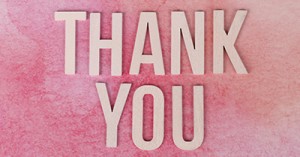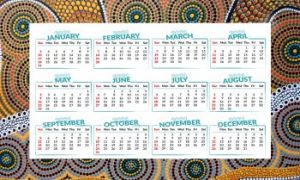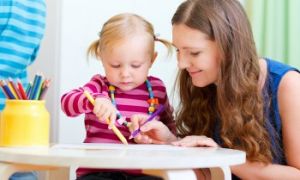Here’s a curated set of critical reflection questions designed to provoke deep thinking around educator-to-child ratios in early childhood settings.
Reflecting on Practice and Impact
- How do our current ratios affect the quality of interactions and relationships with each child?
- In moments of high need (e.g., toileting, transitions, emotional distress), are ratios sufficient to uphold dignity and safety?
- What patterns do I notice in my own stress, responsiveness, or decision-making when ratios feel stretched?
Child-Centered Considerations
- Are all children seen, heard, and responded to meaningfully each day—or are some consistently overlooked due to ratio constraints?
- How do ratios influence our ability to support children with trauma, disability, or complex needs?
- What does “supervision” look like in practice—and does it align with what children deserve?
Team Dynamics and Ethical Accountability
- Do we rely on “workarounds” (e.g., grouping children, skipping documentation) to cope with ratio pressures—and what are the risks?
- How do we support each other when ratios compromise safety or well-being?
- Are educators empowered to speak up when ratios feel unsafe, or is there fear of reprisal?
Systemic and Structural Reflection
- Who benefits from the current ratio standards—and who is disadvantaged?
- How do ratio policies intersect with gendered labor, burnout, and workforce retention?
- What would ethical, trauma-informed ratios look like—and how can we advocate for them?
Action-Oriented Reflection
- What micro-changes can we make to improve visibility, connection, and safety within existing ratios?
- How can we document ratio-related risks and impacts to inform policy or QIP goals?
- What stories, data, or child voices could strengthen our advocacy for ratio reform?
Power, Voice, and Visibility
- Whose voices are prioritized when ratio decisions are made—educators, children, families, or regulators?
- How do ratio pressures shape whose needs are met first—and whose are deferred?
- Are children’s rights to safety, connection, and dignity compromised in the name of “efficiency”?
Intersectionality and Equity
- Do current ratios account for the layered needs of children from diverse cultural, linguistic, or trauma backgrounds?
- How do ratios intersect with systemic issues like poverty, disability, or family violence?
- Are we unintentionally normalizing inequity by accepting “minimum standards” as good enough?
Cognitive Load and Decision-Making
- What decisions do educators delay, rush, or avoid when ratios are tight?
- How does ratio stress impact our ability to notice subtle cues — like a child withdrawing or masking distress?
- Are we documenting what we can see, or what we wish we had time to see?
Barriers to Reform
- What myths or fears prevent us from advocating for better ratios (e.g. cost, staffing, “it’s always been this way”)?
- How do we challenge the narrative that educators should “just cope” or “be more resilient”?
- What data, stories, or collective action could shift the conversation from compliance to care?
Safeguarding and Accountability
- Have we ever missed a safeguarding concern due to ratio constraints—and how was it addressed?
- Are ratio breaches normalized, hidden, or reported—and what does that say about our culture?
- What systems are in place to protect educators who speak up about unsafe ratios?
Further Reading
Under the Roof Ratios
Mixed Age Ratios In An Early Childhood Service
Implementing Under The Roof Ratios







 Here is the list of the EYLF Learning Outcomes that you can use as a guide or reference for your documentation and planning. The EYLF
Here is the list of the EYLF Learning Outcomes that you can use as a guide or reference for your documentation and planning. The EYLF The EYLF is a guide which consists of Principles, Practices and 5 main Learning Outcomes along with each of their sub outcomes, based on identity,
The EYLF is a guide which consists of Principles, Practices and 5 main Learning Outcomes along with each of their sub outcomes, based on identity, This is a guide on How to Write a Learning Story. It provides information on What Is A Learning Story, Writing A Learning Story, Sample
This is a guide on How to Write a Learning Story. It provides information on What Is A Learning Story, Writing A Learning Story, Sample One of the most important types of documentation methods that educators needs to be familiar with are “observations”. Observations are crucial for all early childhood
One of the most important types of documentation methods that educators needs to be familiar with are “observations”. Observations are crucial for all early childhood To support children achieve learning outcomes from the EYLF Framework, the following list gives educators examples of how to promote children's learning in each individual
To support children achieve learning outcomes from the EYLF Framework, the following list gives educators examples of how to promote children's learning in each individual Reflective practice is learning from everyday situations and issues and concerns that arise which form part of our daily routine while working in an early
Reflective practice is learning from everyday situations and issues and concerns that arise which form part of our daily routine while working in an early Within Australia, Programming and Planning is reflected and supported by the Early Years Learning Framework. Educators within early childhood settings, use the EYLF to guide
Within Australia, Programming and Planning is reflected and supported by the Early Years Learning Framework. Educators within early childhood settings, use the EYLF to guide When observing children, it's important that we use a range of different observation methods from running records, learning stories to photographs and work samples. Using
When observing children, it's important that we use a range of different observation methods from running records, learning stories to photographs and work samples. Using This is a guide for educators on what to observe under each sub learning outcome from the EYLF Framework, when a child is engaged in
This is a guide for educators on what to observe under each sub learning outcome from the EYLF Framework, when a child is engaged in The Early Years Learning Framework describes the curriculum as “all the interactions, experiences, activities, routines and events, planned and unplanned, that occur in an environment
The Early Years Learning Framework describes the curriculum as “all the interactions, experiences, activities, routines and events, planned and unplanned, that occur in an environment


